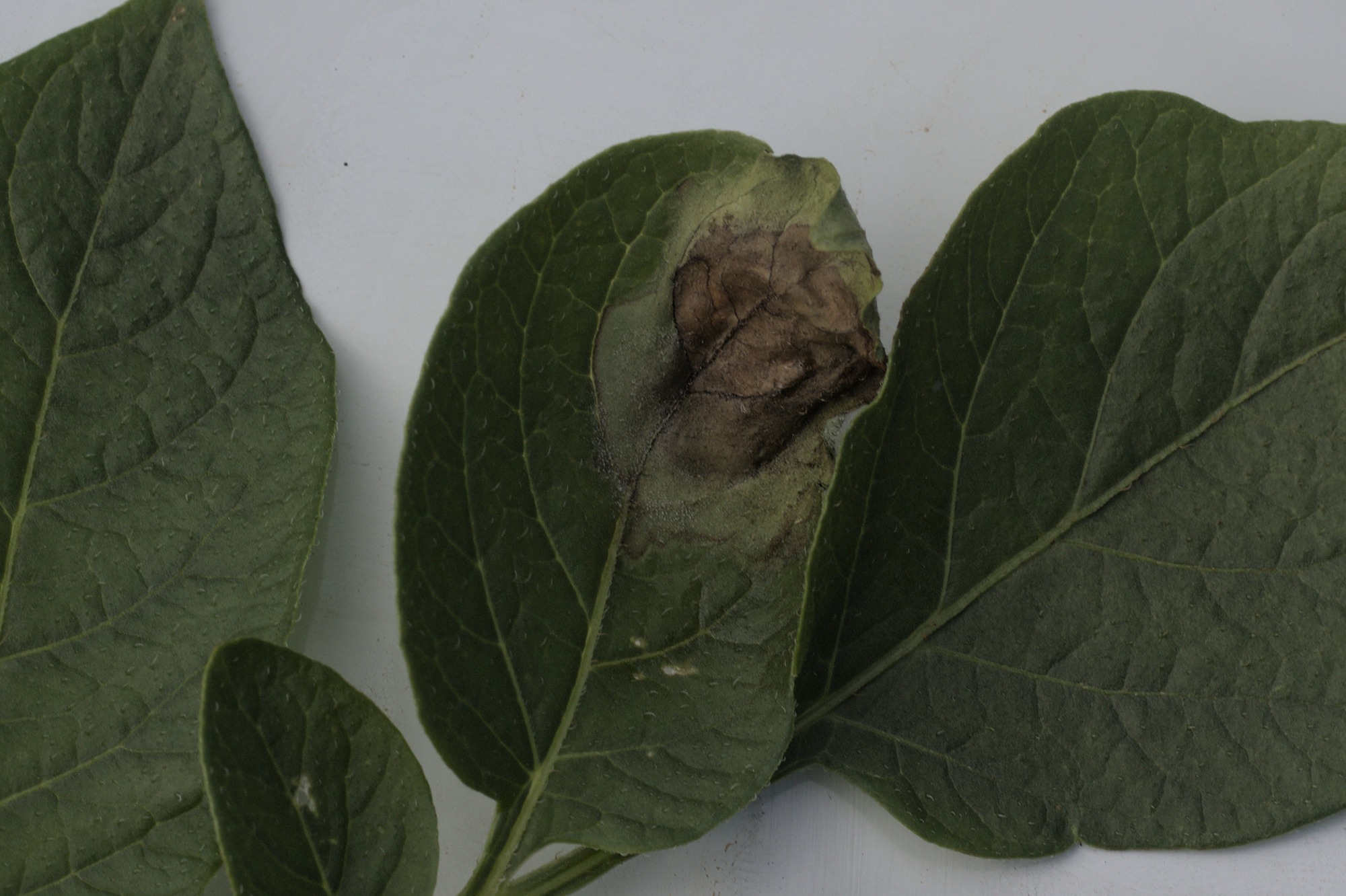This is our guide to potatoes. This is an ongoing body of knowledge, we will continue to update it as we learn more and share our expertise. If you have any questions or anything to share please contact us. Cheers! Good luck potato farming.
What You Need To Know
Do NOT cut our tubers. And plant them soonish. ONLY tubers are edible. Leaves, stems, fruits,flowers, sprouts, roots... everything else is TOXIC.
Plant depth is 6 inches. In general, that is 3 inches below the soil line, with an additional 3 inches formed in a hill above the seed piece. Add the hill after potato plant peeps through the ground. Seed spacing suggestions are at least a 12 to 16 inch separation. I would space rows at least 2.5 feet... preferably 3 feet.
Temperature: anything lower or equal to 28 degrees is catastrophic for spuds. Hot days and cold nights are preferred by potatoes. Do NOT overwater—especially early. Do NOT over apply Nitrogen—especially early.
For questions of yield, we scale up thing in terms of ~15 tubers for each one planted in the field. If it's humid and cloudy—watch out for Late Blight also known as phytophthora infestans—disease culprit of the Irish Potato Famine of the 1840's. Colorado Potato Beetle is another nasty garden pest to look out for.
If you intend to store for a long time; kill the vines, and let the skins mature on the tuber, underground. Remember, only eat the tubers. Leaves, stems, fruits, flowers.... everything else is toxic. Do not ingest green tubers either...Solanine is the toxic glycoalkaloid produced by many plants in the Nightshade family. If you have any questions after reading this, my email is Jpotatoseed@gmail.com. Good luck with your potato farming.
Potato Information and Cultivar Selection
The binomial name of potatoes is Solanum tuberosum. Potato belongs to the nightshade family Solanceae and are related to tomatoes, eggplants, peppers, tobacco, and plenty of other flowering annuals and perennials. The nightshades all share a similar inflorescence or flower structure with five petals, sepals, and stamen. Nevertheless, the genus of Solanum has evolved into over 4000 cultivars in a kaleidoscope of shapes, sizes, and colors. Some potatoes are ancient landraces, some are heirloom/public varieties, and other cultivars are owned by universities, corporations, and people. These privately owned cultivars are granted plant protections and have rights regarding their sale and use.
A potato tuber is a modified stem, full of chemical energy in the form of carbohydrates, that contains the internal and external structures for replication. The function of the tuber is reproduction. Once the tuber starts to sprout these energy reserves are mobilized to drive plant growth. The skin protects the tuber from moisture loss and invasion by some pathogens.
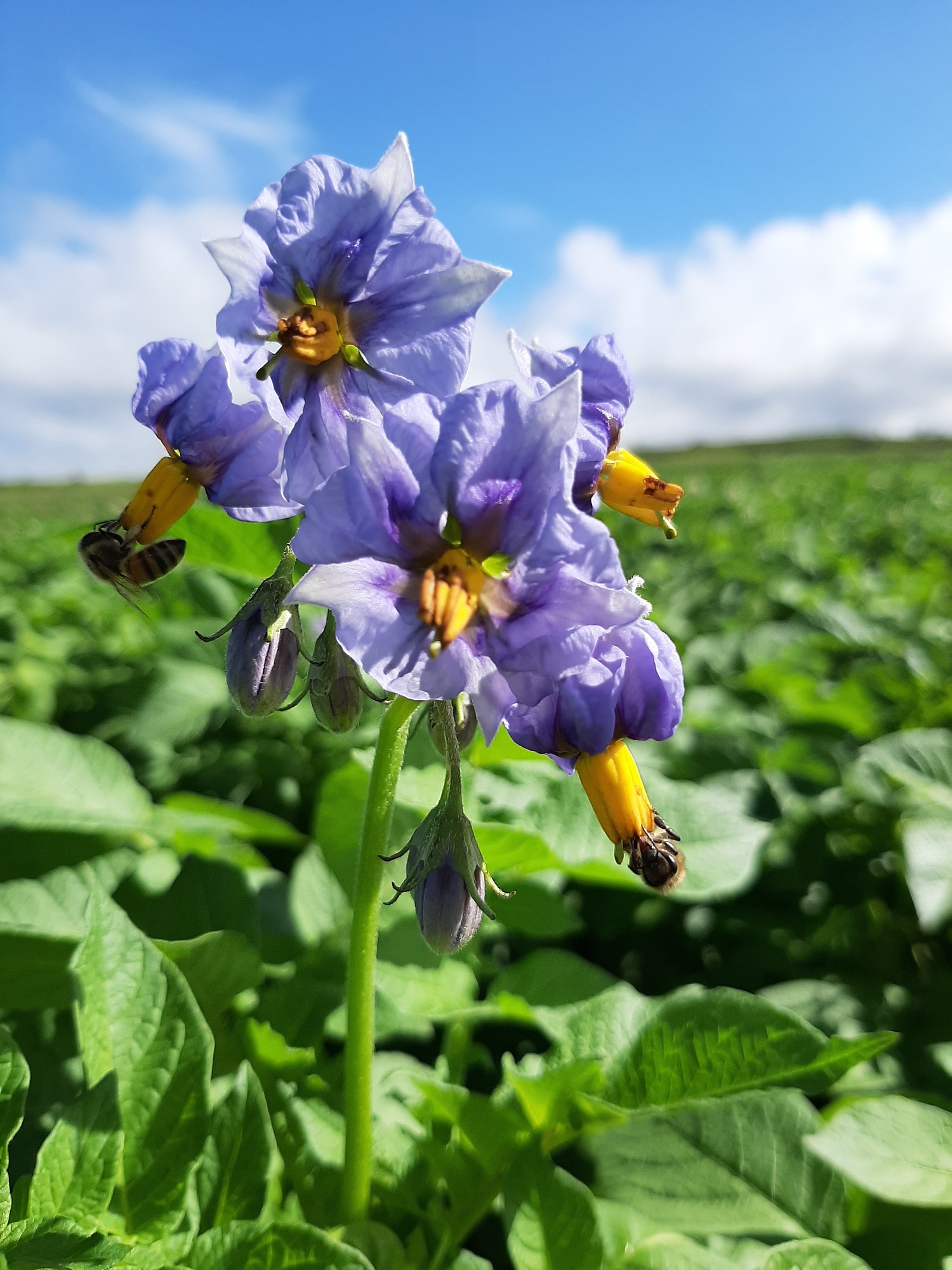
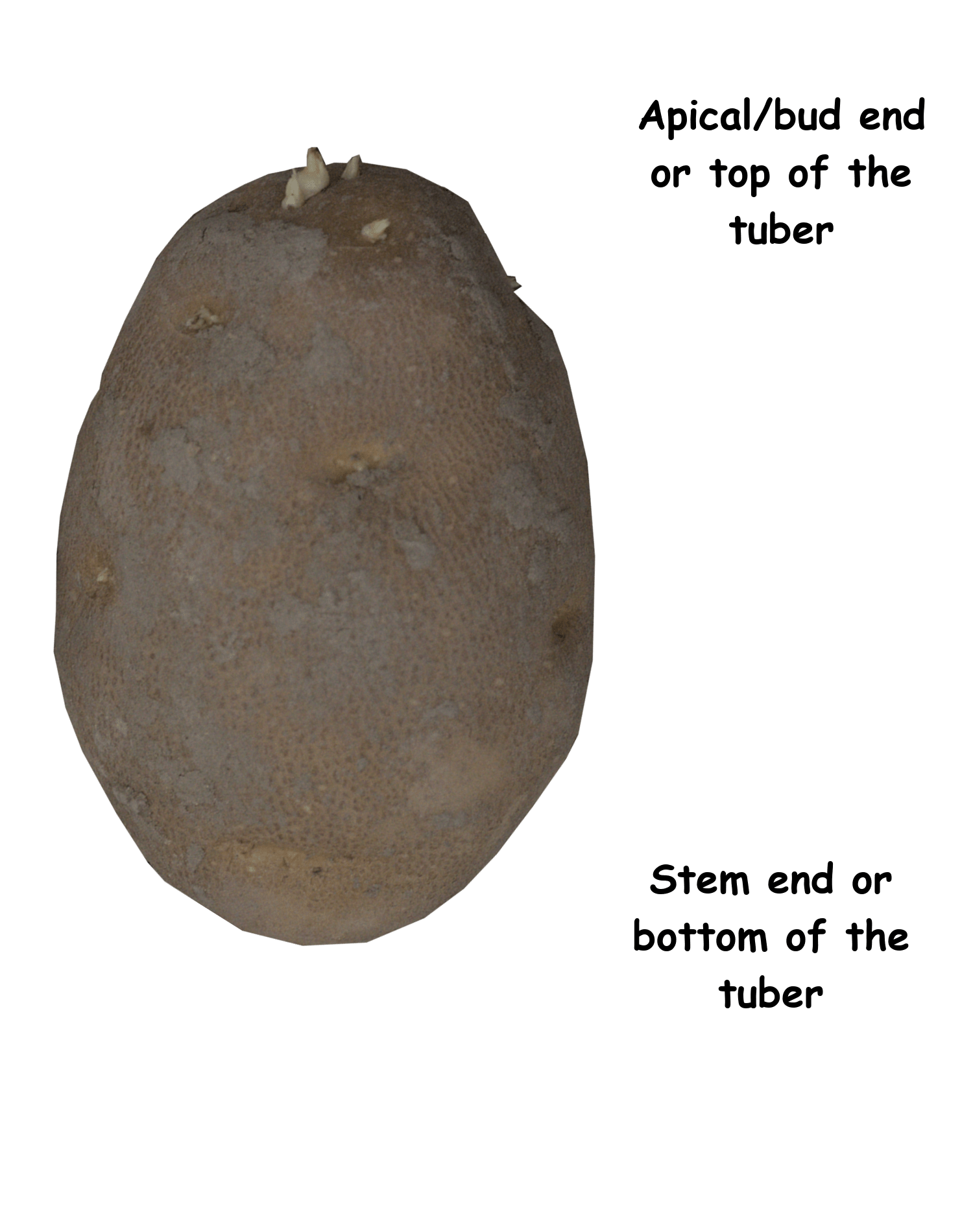
Tubers have a distinct top and bottom. We refer to the bottom as the stem end where the potato was once attached to the mother plant via the stolon. This bottom end is where the dormancy hormones of the potato are stored. The top of the potato is easy to identify when the potato starts to sprout. This top or bud end of the spud sprouts heavily compared to the bottom. Different cultivars have different sprouts, distribution of eyes, shapes, sizes, and colors; but again, all share the same structure and morphology.
Potatoes varieties can range from short to full season and have a wide variety of culinary uses. Culinary use is strongly determined by the texture and composition of the tuber flesh—NOT color. Cultivars that are high in starch content, or dry matter, are mealy, tend to bake with a fluffy texture and make excellent fries and chips due to low oil absorption and generally light color. Our Burbank and Alturas match this culinary profile. Snowden makes the best potato chips, maybe not the best mashed potatoes. Tubers with a waxy texture are lower in starch content and specific gravity, and frequently higher in sugar content. These cultivars hold together better during boiling and are preferred for salads, soups and stews. Our Dark Red Norland and Purple Fingerling are bold stand outs in these culinary categories.
In our years of potato production, we came across an informative metaphor in the textbook Potato Production Systems edited by Stark, Thorton, and Nolte. They find it helpful to frame our thinking of the potato as a type of starch factory. The factory takes inputs (water, nutrients, and carbon dioxide) and uses energy (sunlight) to turn them in to a product (potato tubers that are primarily starch), while releasing oxygen and water as byproducts. The keys to making this “factory” productive are to build the factory as quickly as possible, keep it running as efficiently and as long as possible, and then package the product for shipment when the factory shuts down.
BUILDING THE FACTORY...
First things first, if you are not intending on building your spud factory within a week, you ought to keep your seed in a cool, dark, and dry place. I suggest the refrigerator. All of our potatoes are chitted or woken up from dormancy. Moreover, we only sell single drop seed tubers or European style seed. Lots of growers seek out single drop seed because it gives a grower the best chance at a healthy plant, free of disease.
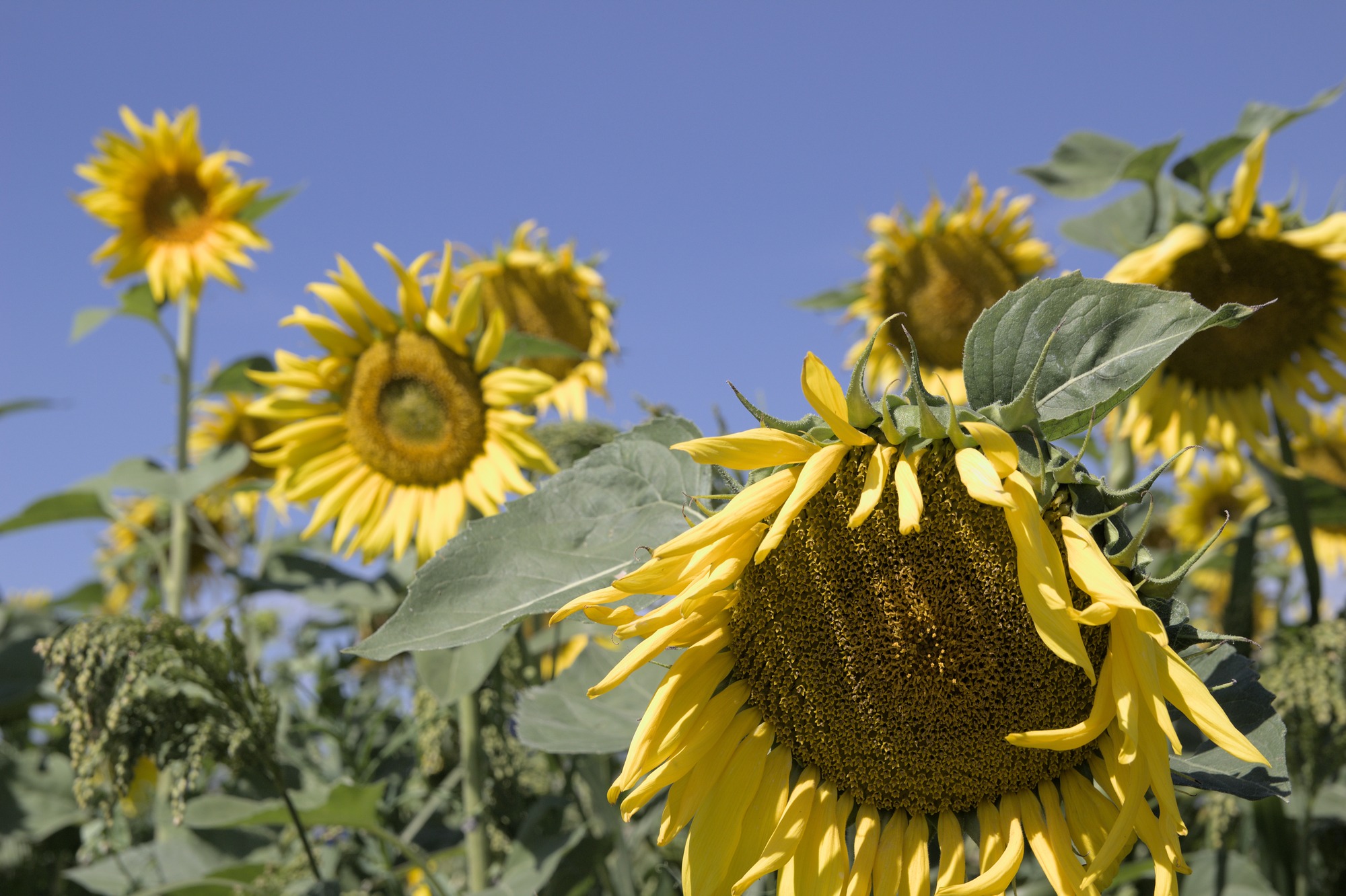
These plants don't like potato factories, their presence risks disease or nutritional problems: carrots, cucumbers, eggplant, onions, peppers, pumpkins, squash, sunflowers, tomatoes, and turnips.
It's best to not follow potato on potato when planting--rotate areas. Potatoes extract lots of nutrients from the soil and most growers rotate at least a year before growing spuds in the same location. As for soil, you want at least 8 inches of something light, loose, and well-drained. Friable soil means easily crumbled and its ideal. Rocks and dirt clods are not ideal. Heavy soil tends to keep the potatoes closer to the roots and you are more likely to get miss shaped and deformed spuds. You don't want to plant hot seed in cold soil or cold seed in hot soil. It will sweat, and moisture is not are friend when breaking ground on the factory. As for nutrients and fertility, anything branded for tomatoes works well with potatoes. I'd incorporate fertilizer when preparing the soil for planting. And when your potato plants begin to flower they start to produce tubers on the ends of the stolons. This is when nutrient and water uptake will be critical for your plant.
RUNNING THE FACTORY...
Keep these potatoes watered. They need at least 1 inch of water a week. When it gets hot, water more. After they flower, water more. If you have sandy soil, water, water, water. If you water too much it can negatively affect the roots and spuds and make your plant susceptible to rot and breakdown. So don't overdo it. As the potato plant grows it is suggested to add soil to the top of your row or container. This will improve soil drainage and keep your tubers from becoming water logged. It also keeps the sun off your new tubers. Flowering denotes your potatoes are putting on tubers. This is when nutrient and water uptake is key. Most farmers at this point are scouting for diseases that threaten starch factory production. But we aren't worried, we didn't cut our factory in half and we bought Montana certified potatoes, seed borne diseases aren't a threat to this factory.
Let's examine what probably is still a risk... late blight and insect pests. If you live in a humid cloudy area be on the lookout for Phytophthora Infestans. It will appear on the potato leaves as a brownish/gray lesion that usually crosses the veins of the potato leaflet. Moreover, you can sometimes see a light green halo that surrounds the infection. The underside of the leaf will sporulate. Bad bad stuff.
As for insects, lacewings, ladybugs, damsel bugs, and most spiders are potato factories best friends. They eat mites, aphids, and the larvae of Colorado Potato Beetle which are not good for starch factory production.
Potatoes are susceptible to: Potato Virus Y, Potato Leafroll Virus, Alfalfa Mosaic Virus, Tomato Spotted Wilt Virus, Bacterial Ring Rot, Blackleg, Powdery Scab, Late Blight, Early Blight, Verticillium Wilt... and these are just the seed born diseases. We haven't even unpacked how dirty soil can be.
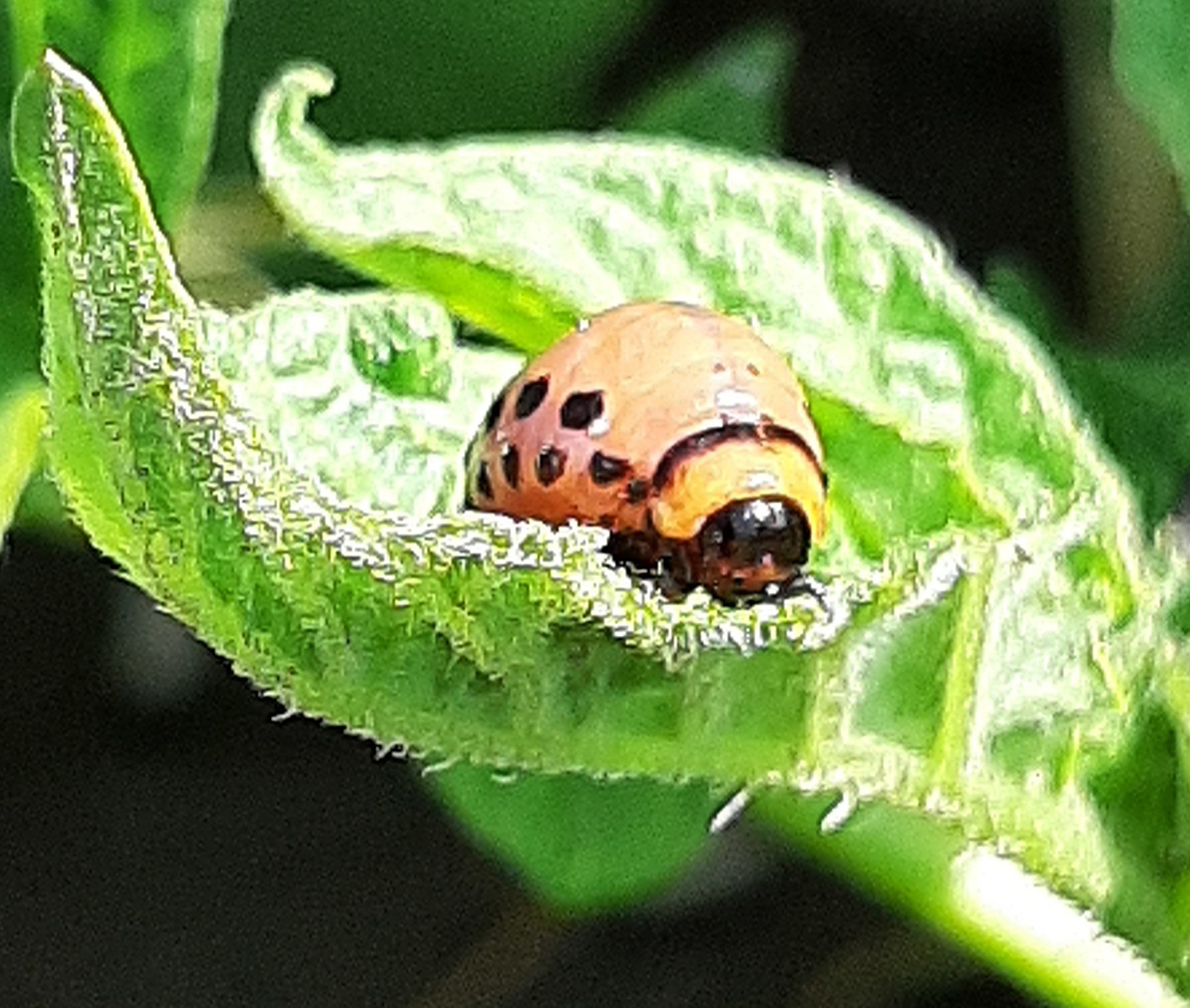
CULTIVATING THE FACTORY...
You can “harvest” the baby spuds while your factory is running. But be careful not to harm the mother plant. If you are planning on storing your potatoes two important tenets of advice. Stop watering as heavy the last week, let your potatoes size. Second, you should kill the vines and wait 10 days before harvest to let the skins thicken and cure. Store in a cool, dark, and dry place. Check for problems often. Rotting potatoes are one of the nastiest smells. Breakdown in harvest can get out of control if rotting potatoes are allowed to fester on healthy ones. Red, purple, yellow and white skinned potatoes tend to have thinner skins and are harder to store than some of the Russet cultivars—Burbank is the best.





